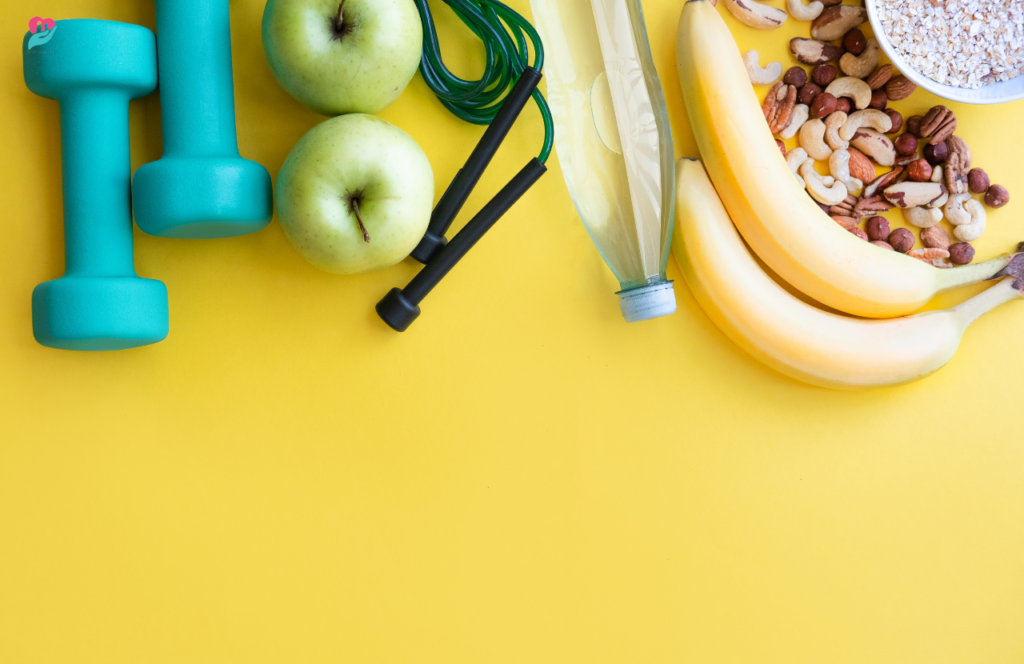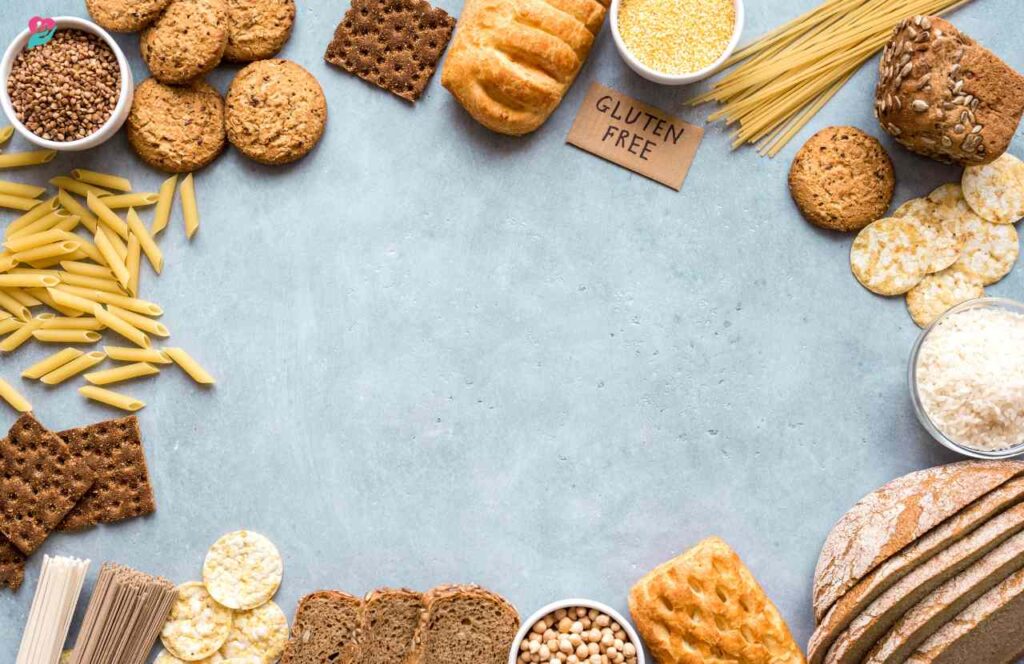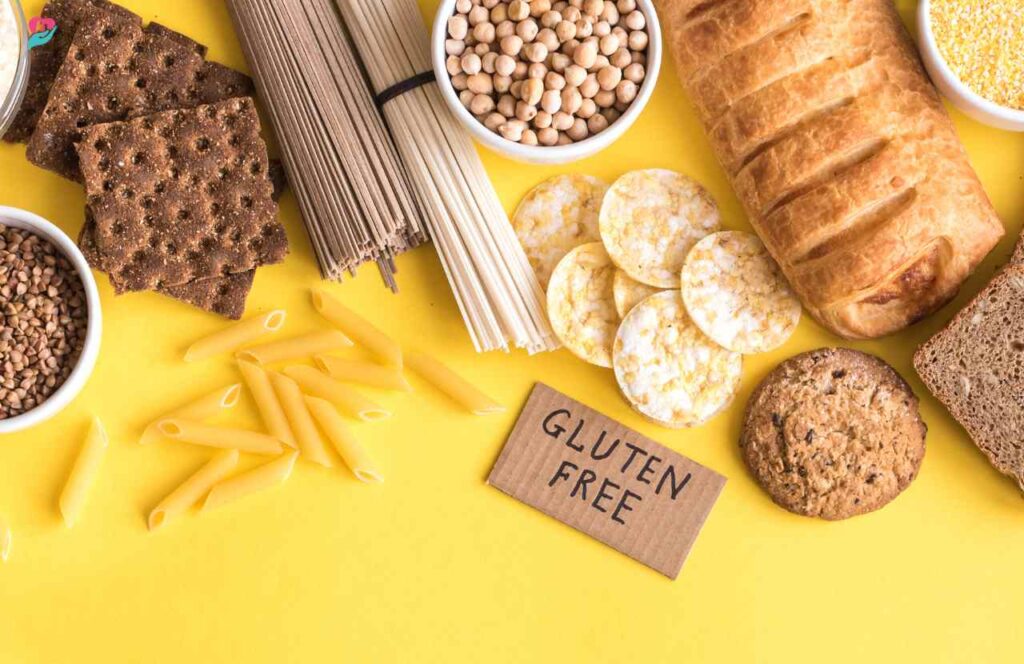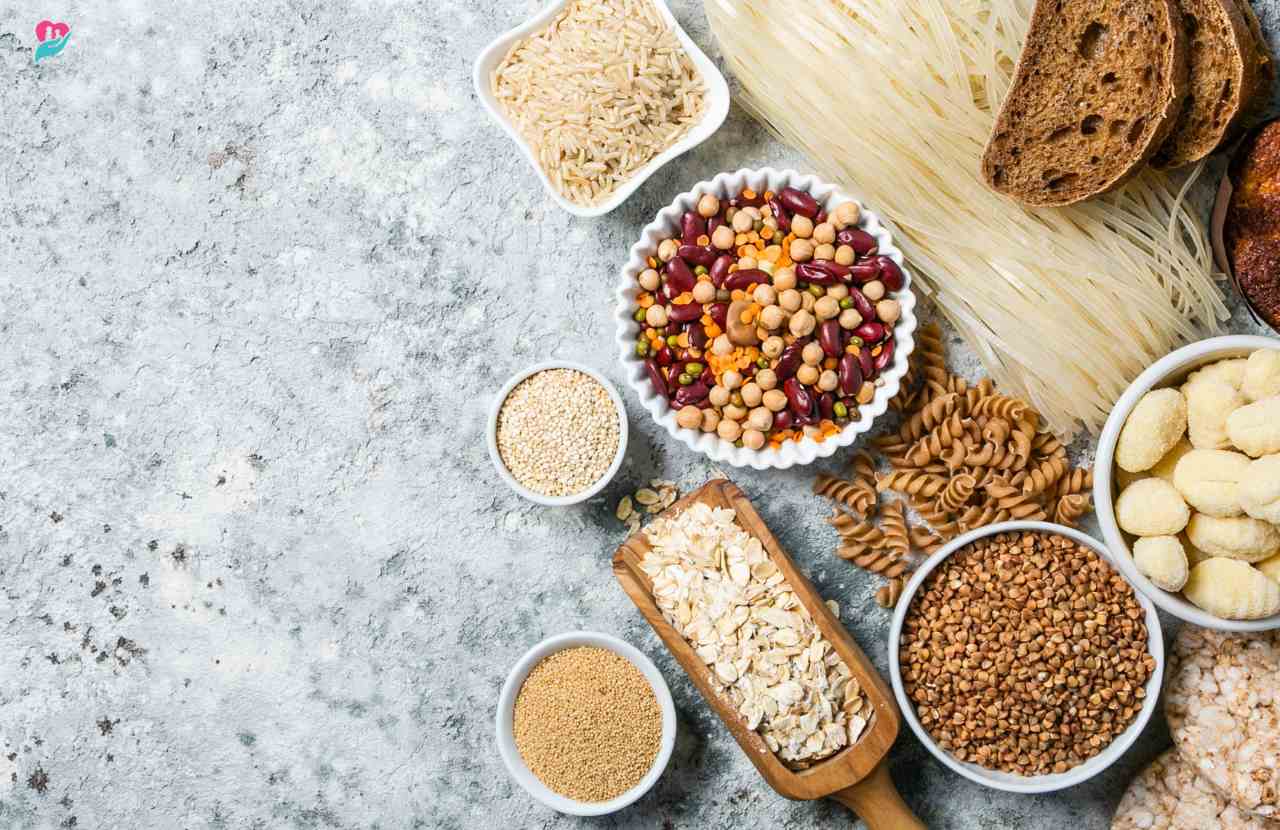The “Fit Philosophy” is an approach to health and wellness that stresses the value of living a healthy, balanced life. This includes going to the gym regularly, eating mindfully, and eating whole, nutrient-dense foods. A gluten-free diet can also be an important part of a healthy lifestyle for people who are sensitive to gluten or have celiac disease. In this article, we’ll talk about a Fit Philosophy Healthy Gluten Free Easy Recipes with the benefits of the “Fit Philosophy,” why eating gluten-free can be good for you, and give you some easy and tasty gluten-free recipes to get you started on your path to wellness.
What is a Fit Philosophy of Healthy Gluten Free Easy Recipes?
“A Fit Philosophy” is a way of living and eating that focuses on having a healthy, balanced life. It is a way of Life that includes regular exercise and a healthy diet based on whole foods that are high in nutrients and don’t contain any processed or fake ingredients.
Regarding food, “A Fit Philosophy” stresses the importance of avoiding gluten, a wheat, barley, and rye protein that can make some people sick. People with celiac disease or a gluten allergy must avoid gluten.
The theory also stresses how important it is to eat meals that are easy to make and can be made quickly without giving up taste or nutrition. Many “A Fit Philosophy” recipes are based on whole, natural foods like fresh fruits and veggies, lean proteins, healthy fats, and gluten-free grains like quinoa and brown rice.
Overall, “A Fit Philosophy” encourages a healthy eating method that puts whole, unprocessed foods, regular exercise, and self-care practices at the top. Recipes that are gluten-free and easy to make are a big part of this method. They make it easier for people to eat healthy food every day.
Read More: Are Potatoes Good for Weight Loss?
What are the Benefits of a Healthy Lifestyle?

One of the most important things we can do to improve our health and well-being is to live a good life. When we take care of our bodies and thoughts, we feel better, have more energy, and are better able to deal with the challenges of daily Life. Here are a few perks to living a healthy life:
1. Better physical health: Living a healthy life can make you less likely to get long-term diseases like heart disease, diabetes, and cancer.
2. Your mental and emotional health: A healthy lifestyle can improve your mood and make depression and worry less of a problem.
3. More energy: Eating well and working out regularly can help you feel less exhausted and give you more energy.
4. Better sleep: Living a healthy life can help you sleep better and for longer.
5. Weight management: Eating well and exercising regularly can help you manage weight.
Why can Gluten Free Eating be Beneficial?

Gluten is a protein found in rye, barley, and wheat, among other foods. Some people have a wide range of symptoms when they eat gluten, from mild discomfort to significant health problems. This includes people with celiac disease, a dangerous autoimmune disease that damages the small intestine when gluten is eaten. Some people also have non-celiac gluten sensitivity, which has similar symptoms to celiac disease but does not hurt the small intestine.
People sensitive to gluten or celiac disease must follow a gluten-free diet to stay healthy. But even people who aren’t sensitive to gluten may feel better if they cut back on how much gluten they eat. Studies have shown that people with irritable bowel syndrome (IBS) can benefit from a gluten-free diet. It may also help people with other autoimmune diseases feel better.
Gluten-free eating can also help people eat healthier by getting them to eat more whole, nutrient-rich foods. By focusing on whole foods like lean proteins, fruits, vegetables, and gluten-free grains like quinoa and brown rice, people can make sure they get the nutrients they need to support their general health. Many gluten-free goods on the market have gone through much processing and don’t offer much nutrition.
A Fit Philosophy of Healthy Gluten Free Easy and Delicious Recipes

Transitioning to a gluten-free diet can seem daunting, but many easy and delicious recipes are available that are healthy and satisfying. Here are a few of our favourites:
Gluten-Free Chicken Alfredo
Ingredients:
- 1 pound gluten-free pasta (such as brown rice pasta)
- 1 pound boneless, skinless chicken breasts cut into bite-sized pieces
- One tablespoon of olive oil
- One tablespoon of garlic powder
- Salt and pepper to taste
- 1 cup heavy cream
- 1/2 cup grated Parmesan cheese
- Fresh parsley for garnish
Instructions:
- Cook the pasta according to the package directions.
- In a big pan over medium-high heat, heat the olive oil. Cook until browned and cooked through. Pepper, salt, and garlic powder can season the chicken.
- Reduce heat to medium-low and add heavy cream and Parmesan cheese to the skillet. Stir until the sauce is smooth and the cheese has melted.
- Drain the pasta and add it to the skillet with the chicken and sauce. Toss until the pasta is coated in the sauce.
- Garnish with fresh parsley, and serve.
Quinoa Stuffed Bell Peppers
Ingredients:
- Four bell peppers, halved and seeded
- 1 cup quinoa
- 1 1/2 cups vegetable broth
- One can of black beans, drained and rinsed
- One can of diced tomatoes
- One teaspoon cumin
- One teaspoon of garlic powder
- Salt and pepper to taste
- Shredded cheese for topping (optional)
Instructions:
- Preheat the oven to 375°F.
- Cook quinoa in vegetable broth according to package directions.
- Mix cooked quinoa, black beans, diced tomatoes, cumin, salt, garlic powder, and pepper in a large bowl.
- Place bell pepper halves in a baking dish and fill each half with the quinoa mixture.
- Cover with foil, and bake for 30 minutes.
- Remove the foil, top with shredded cheese (if desired), and bake for 10–15 minutes until the cheese is melted and bubbly.
Gluten-Free Banana Pancakes
Ingredients:
- 1 cup gluten-free flour (such as almond flour or coconut flour)
- One teaspoon of baking powder
- 1/2 teaspoon cinnamon
- 1/4 teaspoon salt
- Two ripe bananas, mashed
- Two eggs
- 1/2 cup milk (or non-dairy milk of your choice)
- One teaspoon of vanilla extract
- Coconut oil or butter for cooking
Instructions:
- Mix baking powder, flour cinnamon, and salt in a large bowl.
- Whisk together mashed bananas, eggs, milk, and vanilla extract in a separate bowl.
- Pour the wet ingredients into the dry ingredients and stir until well combined.
- Heat a non-stick skillet or griddle over medium-high heat. Add coconut oil or butter to the skillet.
- Pour pancake batter onto the skillet, using 1/4 cup for each pancake.
- Cook the pancake until bubbles appear on the top, then flip it and cook for another minute or two until golden brown.
- Serve with your favorite toppings, such as sliced bananas and maple syrup.
A Fit Philosophy for Seven Healthy Gluten Free and Easy Recipes to Prepare Breakfast Menus
Here are seven gluten-free and easy-to-prepare breakfast menus based on the principles of A Fit Philosophy:
Banana Oat Pancakes
Greek Yogurt Parfait:
- Layer Greek yogurt with fresh berries, gluten-free granola, and honey for a protein-packed breakfast that will keep you full until lunch.
- Mash a ripe banana with rolled oats, almond milk, and cinnamon.
- Cook the mixture in a non-stick pan and serve with fresh fruit.
Veggie Scramble
Sauté your favorite veggies in olive oil, such as spinach, bell peppers, and onions. Add in the scramble and eggs until cooked through. Serve with gluten-free toast.
Quinoa Breakfast Bowl
Cook quinoa in almond milk and add fresh fruit, nuts, and honey for a delicious and nutritious breakfast bowl.
Sweet Potato Hash
Shred a sweet potato and cook it in a non-stick pan with olive oil. Add in spinach, garlic, and onions for added flavor. Serve with a side of turkey sausage or bacon.
Green Smoothie
Blend spinach, kale, almond milk, banana, and peanut butter for a nutrient-packed smoothie for on-the-go breakfasts.
Overnight Chia Pudding
Mix chia seeds with almond milk and honey. Let sit overnight and top with fresh fruit, gluten-free granola, and a drizzle of almond butter for a breakfast that feels like dessert.
All of these breakfast menus are gluten-free and easy to prepare. It makes them a great option for those following the principles of the Fit Philosophy. They are also full of minerals, vitamins, and protein, which will help you feel full and energized all day.
A Fit Philosophy for Three Healthy Gluten Free and Easy Recipes to Prepare Lunch Menus
A Fit Philosophy is a healthy lifestyle that promotes gluten-free and easy-to-prepare meals. Here are three lunch menus that follow this philosophy:
Menu: One
- Grilled chicken breast with mixed greens and cherry tomatoes
- Baked sweet potato fries
- Apple slices with almond butter
Menu: Two
- Quinoa salad with cucumbers, cherry tomatoes, and feta cheese
- Hard-boiled eggs
- Fresh berries
Menu: Three
- Turkey lettuce wraps with avocado, tomato, and onion
- Carrot sticks with hummus
- Greek yogurt with mixed nuts and honey
All of these lunch menus are gluten-free and easy to prepare. They contain a balance of protein, healthy fats, and fiber-rich carbohydrates to help keep you full and energized throughout the day.
The first menu features grilled chicken breast with mixed greens and cherry tomatoes, a simple and tasty way to get in your daily dose of protein and veggies. The baked sweet potato fries provide a nutritious and gluten-free alternative to traditional french fries. For dessert, apple slices with almond butter offer a satisfying blend of healthy fats and natural sweetness.
The second menu showcases a quinoa salad with cucumbers, cherry tomatoes, and feta cheese, which is a delicious and filling gluten-free grain alternative. Hard-boiled eggs provide additional protein, while fresh berries add a pop of color and sweetness to the meal.
The third menu highlights turkey lettuce wraps with avocado, tomato, and onion, which offer a healthy and flavorful twist on traditional sandwiches. Carrot sticks with hummus make a crunchy and satisfying side, while Greek yogurt with mixed nuts and honey provides a nutritious and sweet way to end the meal.
These three lunch menus demonstrate that eating gluten-free can be easy and delicious. By incorporating a variety of nutrient-dense foods into your meals, you can support a healthy lifestyle and feel your best.
How to Make A Fit Philosophy Healthy and Gluten-Free a Part of Your Life?
- When you go food shopping, read the labels and check the ingredients. Avoid products made with wheat, barley, rye, and oats, as these are popular sources of gluten.
- Read the nutrition facts on food packages to find secret gluten sources.
- Look for gluten-free choices certified or made with naturally gluten-free ingredients, like quinoa, buckwheat, millet, or chia seeds.
- Use almond flour, coconut flour, oat flour, and other gluten-free grains and flours in your baking.
- Try different herbs and spices to make tasty dishes without using wheat-based goods.
- Before making any changes to your diet, always talk to your doctor or nutritionist. They can give you the best information about what will work for you.
- Don’t forget to keep your kitchen clean and free of gluten-containing items that could get into other foods.
FAQs about gluten Free recipes
Here we will talk about the top questions about gluten-free foods. Keep an eye on these queries.
What is Gluten Free?
A gluten-free diet includes foods that don’t naturally contain gluten and foods made with gluten-free ingredients. Fruits, veggies, meats, poultry, fish, eggs, legumes, nuts, seeds, and dairy products are all examples of foods that don’t have gluten in them. Gluten-free dietary restriction means you can’t eat wheat, barley, rye, or sometimes oats, which all have the protein gluten. Some people, like those with celiac disease or gluten sensitivity, can have trouble digesting gluten. Grains like rice, corn, quinoa, millet, and flours like tapioca, coconut, and almond flour can be used as gluten-free alternatives.
Is Rice Gluten Free?
Yes, rice is gluten-free. It is a naturally gluten-free grain and is a staple food for many people on a gluten-free diet. This makes rice a great option for those who need to avoid gluten, such as people with celiac disease or gluten sensitivity. However, it’s important to ensure that rice and rice-based products are not cross-contaminated with gluten during processing or preparation. Additionally, some rice dishes may contain ingredients that are not gluten-free, so it’s always important to check the ingredients and preparation methods before consuming any dish.
Is Oatmeal Gluten Free?
Oats don’t have gluten in them naturally, but they can often get gluten on them when processed. This is because oats are often handled in the same places as gluten-containing wheat, barley, and rye. For this reason, looking for certified gluten-free oats is important if you are on a gluten-free diet. These oats have been handled in a way that makes gluten less likely to be mixed in with them. Certified gluten-free oats are available in many food stores and online.
Is Quinoa Gluten Free?
Yes, quinoa is gluten-free. It is a seed often used as a substitute for grains in gluten-free diets. Quinoa is a good source of fiber, protein, and essential nutrients such as magnesium, iron, and zinc. However, cross-contamination with gluten during processing is possible, especially if quinoa is processed in a wheat, barley, or rye facility. It’s important to ensure that the quinoa you purchase is labeled as gluten-free and has been processed in a facility that does not process gluten-containing grains.
Are Potatoes Gluten Free?
Yes, potatoes are gluten-free. They are a type of starchy vegetable and do not contain gluten, a protein found in barley, wheat, and rye.
However, it’s important to note that some processed potato products may contain gluten-containing ingredients such as flavorings, additives, or fillers. For example, some potato chips or French fries may be coated in a batter or seasoning containing gluten.
Are Doritos Gluten Free?
Some varieties of Doritos are gluten-free, but not all of them. It’s important to check the ingredients list and packaging for each flavor of Doritos. The following flavors of Doritos are typically considered gluten-free:
- Doritos Nacho Cheese Flavored Tortilla Chips
- Doritos Cool Ranch Flavored Tortilla Chips
- Doritos Spicy Nacho Flavored Tortilla Chips
- Doritos Toasted Corn Tortilla Chips
However, other flavors of Doritos may contain gluten ingredients, such as wheat flour, maltodextrin, or modified food starch. Additionally, cross-contamination can occur during manufacturing or packaging, which could also introduce gluten into the product.
Is Popcorn Gluten Free?
Popcorn is made from corn that does not contain gluten, so it is naturally gluten-free. But some widely available popcorn may have been made with ingredients that contain gluten or may have been contaminated with gluten during production. Also, it’s important to know that some flavoured popcorn, like those with extra spices or coatings, may contain gluten ingredients. Before you eat these kinds of goods, you should always look at the list of ingredients and the packaging.
Is Barley Gluten Free?
No, barley is not gluten-free. It contains a protein called gluten, which can trigger an immune response in people with celiac disease or gluten intolerance. Barley is one of the grains that should be strictly avoided in a gluten-free diet. Barley is commonly used in various foods, including bread, cereal, soup, and beer. Look for products labeled “gluten-free” or certified by a reputable organization. Suppose you have celiac disease or gluten intolerance. In that case, it is important to read the ingredient labels carefully to ensure your products are free from barley and other gluten-containing grains.
Is Cheese Gluten Free?
Most types of cheese are gluten-free, as they are made from milk, which does not contain gluten. However, some types of cheese may contain gluten if they are flavored or processed with gluten-containing ingredients. For example, some types of blue cheese are made with bread mold, which can contain gluten. Some cheese products, like cheese spreads or flavored cheese, may contain gluten-containing ingredients like wheat, barley, or malt.
Final Words
In conclusion, the “Fit Philosophy” emphasizes the importance of a healthy and balanced lifestyle, including regular exercise, mindful eating, and whole, nutrient-dense foods. A gluten-free diet can also be an important part of a healthy lifestyle for people who are sensitive to gluten or have celiac disease. Focusing on whole, gluten-free foods and adding easy, tasty meals to your routine can help your health and well-being as a whole.

